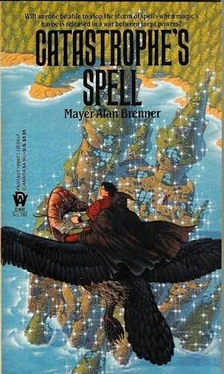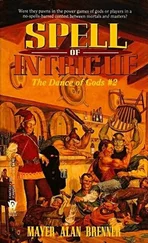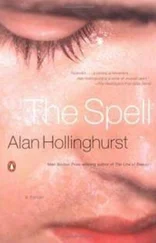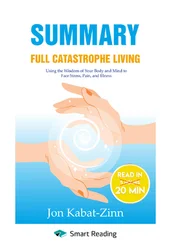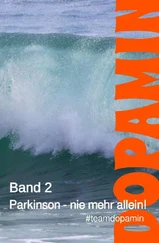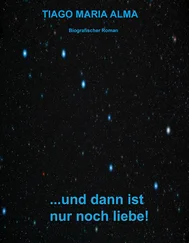With lips pursed, Max tilted his head to one side. “Hmm.” Then he grabbed a tablet and began scribbling.
“You know, Max,” Roni said, “Karlini’s never forgiven you for proving the Discontinuity Proposition. He’d finally gotten comfortable with the Doctrines of Conservation, and then you came back and said it was fine to dig holes through them.”
Karlini’s equations had resumed their winding and were beginning to flow into a structure. “The two aren’t inconsistent,” Max said, his attention still on his scribbling. “Conservation works whether you’re there or not. Establishment of a discontinuity requires the input of energy and imposition of a high degree of control. If you -”
A snapping sound came from Karlini’s workspace. The floating figure was now a rough meshwork sphere, indentations and holes drifting across the surface. The mesh lines glowed orange-yellow, brighter sparks flaring where the lines intersected. The construct rotated slowly, wobbling in two axes, making a low whirr in the air. A prominent hump on the globe’s northern hemisphere jumped in and out, the snapping sound coordinated with the oscillations. Max looked down at his tablet, nodding to himself, quickly scribbled another line at the bottom, closed his eyes, and drew his finger in a curlicue pattern along the writing. His final line of equations glowed blue, rose off the paper into the air, and shot over into the floating globe, weaving itself into the surface.
The hump evened out.
“I never thought of that,” Karlini said, surprised.
“Go ahead, try it.”
Karlini concentrated and gestured. The ball’s equator waffled wildly and started to spike. “No,” Max said, “it’s a modulator.” He sketched in the air, leaving hanging figures. “This is the command string, this is the modifier. The modifier has nine matrix terms and … “ The equator settled down. “There, you’ve got it now.”
Karlini smoothed the other transients. “Thanks, Max, I’ve been wondering what to do about that. Now, we aim it.” Six depressions appeared at equidistant spots, top, bottom, and four compass corners, holding position as the surface swept over them. “Coordinate axes.”
“Right.”
The hollows tilted as a unit, forward, to one side, spun slowly, reached inward. The structure shuddered, collapsed into itself, and faded from sight, leaving the air slightly curdled. Max clasped his hands behind his back and paced slowly around the space, examining it closely. He gestured again. The spot of turgid air churned and then smoothed. There was no sign of the construct. “Nice,” Max said. “No visual manifestation at all. Good for a spy probe.”
“That’s the idea.” A yellow point glowed suddenly in the center of the empty space. Karlini made twirling passes. The point stretched itself into a line, rotated out of the void, and became a flat ring. The cabinet of alembics and other glassware on the wall behind it faded from sight. Within the ring, an aerial view of a walled city appeared. Karlini sank into a chair and stretched out his legs. “I logged the coordinates from before. This is Roosing Oolvaya from about ten thousand feet. We’re looking primarily at the older section, inside the walls.”
The walls themselves were not visible, but sharp straight edges divided the overgrown and tangled confusion of the original city from the fields and the more open confusion of the suburbs. “So what exactly are we looking at here?” Max said.
“Roosing Oolvaya sits on the west bank of the River Oolvaan,” Roni said. “The river takes a long curve out to the east in this area and then loops back to the west; the city’s right at the eastern-most edge of this bulge. About fifteen miles downstream to the south the Oolvaan splits into its three primary distributaries: the Greater, Lesser, and Equivocal Oolvaans.”
“Wait – what are you talking about, distributaries? You mean tributaries, right?”
“No, Max,” Roni said patiently, if with an air of some superiority. “The tributaries feed into the river, not out of the river. Distributaries flow away from the main stream.”
“Well, you learn something every day, sometimes,” Max grumbled. “Who makes these things up, the Imperial Archivist? But the Equivocal Oolvaan’s the one that floods, right?”
“Right. The east bank of the Oolvaan is the start of the mountains,” she went on, “the Rondingian Uplift and the Rondingian Steeps. This castle’s on the other side of the Steeps now, in the middle of the desert. But the Oolvaan attracts runoff from a considerable distance on both banks - mountain runoff from the east side and plains and farms from the west. As you go north the terrain on the west bank gradually becomes steeper and more mountainous until it’s pretty much the same as the east; that whole range is the Rondingian Heights. The Oolvaan starts somewhere up in there.
“Back to Roosing Oolvaya itself. As I said, the city is on the west bank of the Oolvaan at the eastern end of one of its turns, where the river widens and slows down. The city uses this natural harbor shielded from the current by a small cape at the north end and a chain of islands in the middle of the river, basically a perfect location for the domination of river traffic. Of the five major islands, one has the port and warehousing facilities, one’s being developed for fancy residential use, two are private estates, and the last has an old imperial garrison fort that’s being used as the palace of the Venerance.”
“Venerance, eh?” Max said.
“It’s some kind of traditional title newly revived. He’s addressed as ‘Your Venerance’ or ‘Venerable Sir’.”
“Wonderful. I’ll try not to meet him. Will I have to?”
Karlini and Roni exchanged another one of their glances. “The situation’s fairly confused,” said Roni. “It’s not impossible. Dear, give Max a closer look at the view.”
The scene expanded as the field zoomed in. Irregular blocks and streets became visible, then individual buildings within the blocks. Then - the picture shimmered, a rash of mottled blotches appeared scattered across the surface, and the edge of the flat viewing disc began to smoke.
“What -” said Max.
“I don’t know!” Karlini said. The blotches bulged out into the room, the images around them stretching like paintings on taffy. A horrendous high-pitched whine built. One by one in a rapid-fire barrage the bubbling spots abruptly popped like pricked balloons, the view around each one fracturing into kaleidoscope shards, and an intense silver light burst in pulsing rays through the holes. Streamers of lightning spread out and reached for Karlini. Karlini’s fingers were a blur, smoke and sparks coming from them as well as from the ruptured disc. “Max!” he yelled, “I can’t hold it!”
The image in the ring was gone and the plate of silver light shone through like a sun. Max, who had been gesturing too, reeled off a string of figures. The figures spun into formation and darted into the ring. The surface of the silver plate heaved, the center swelled up, and then Karlini’s original meshwork ball pushed itself through, the orange mesh framework trailing interwoven threads of burning silver. Karlini’s construct was no longer a ball but rather a writhing amoeboid blob, its neat grid lines shooting off in wild hyperbolic sprays, irregular fragments curling back to pierce the structure and coil through its walls. A shudder ran through the blob as Max’s second barrage danced along its surface. The roaring whine intensified. Max’s amulet, which had been quivering on his chest, jumped out of his shirt, lights playing in the tiny sapphires and larger stones. A tendril of lightning grazed the seagull and one of its tail feathers burst into flame. Roni, who had been deflecting the lightning, was sheeting sweat, her hands quivering in violent tremors, fasciculations twitching over her brow. The center of the silver disc opened and drew back. Behind it was a giant eye.
Читать дальше
